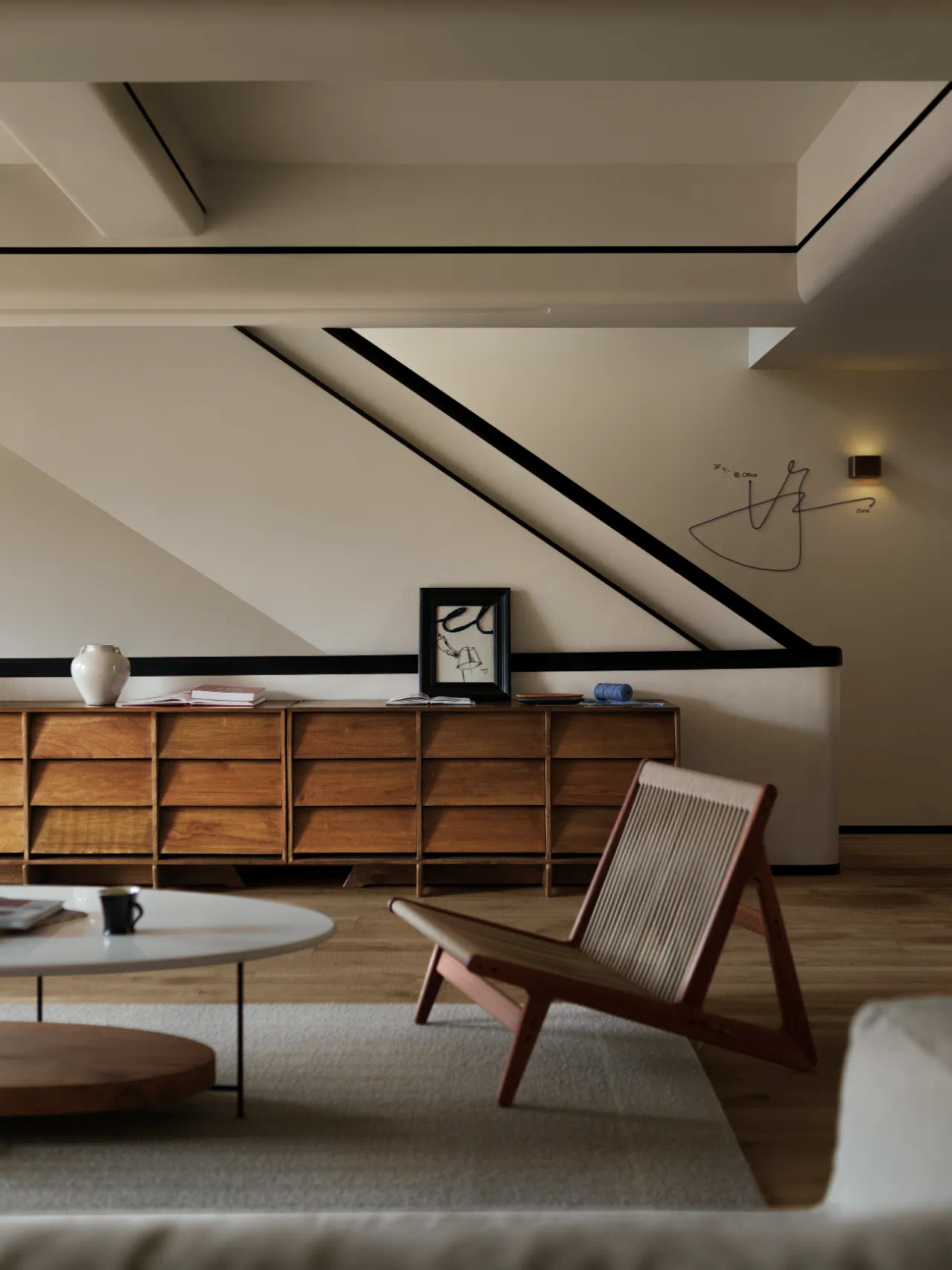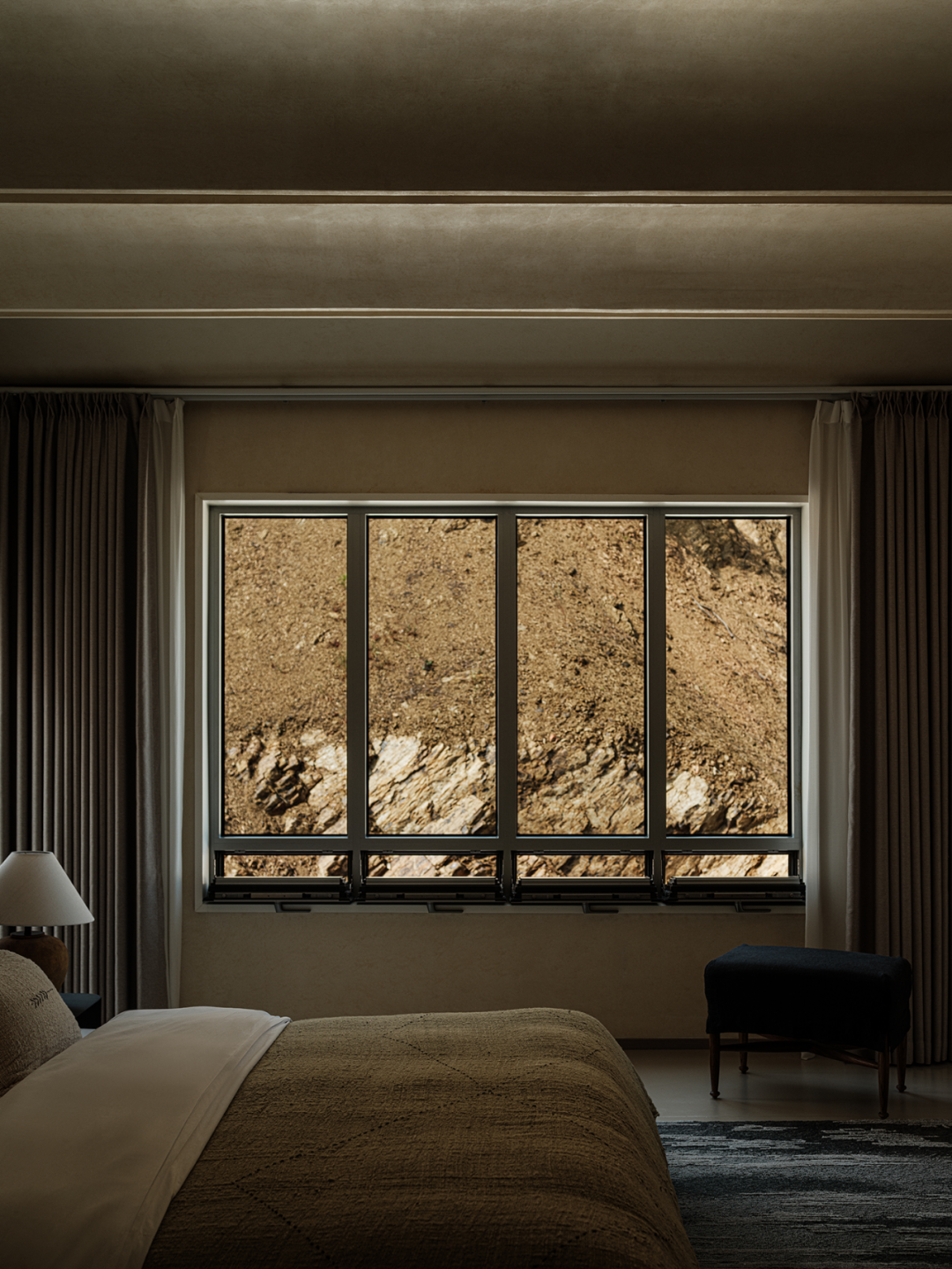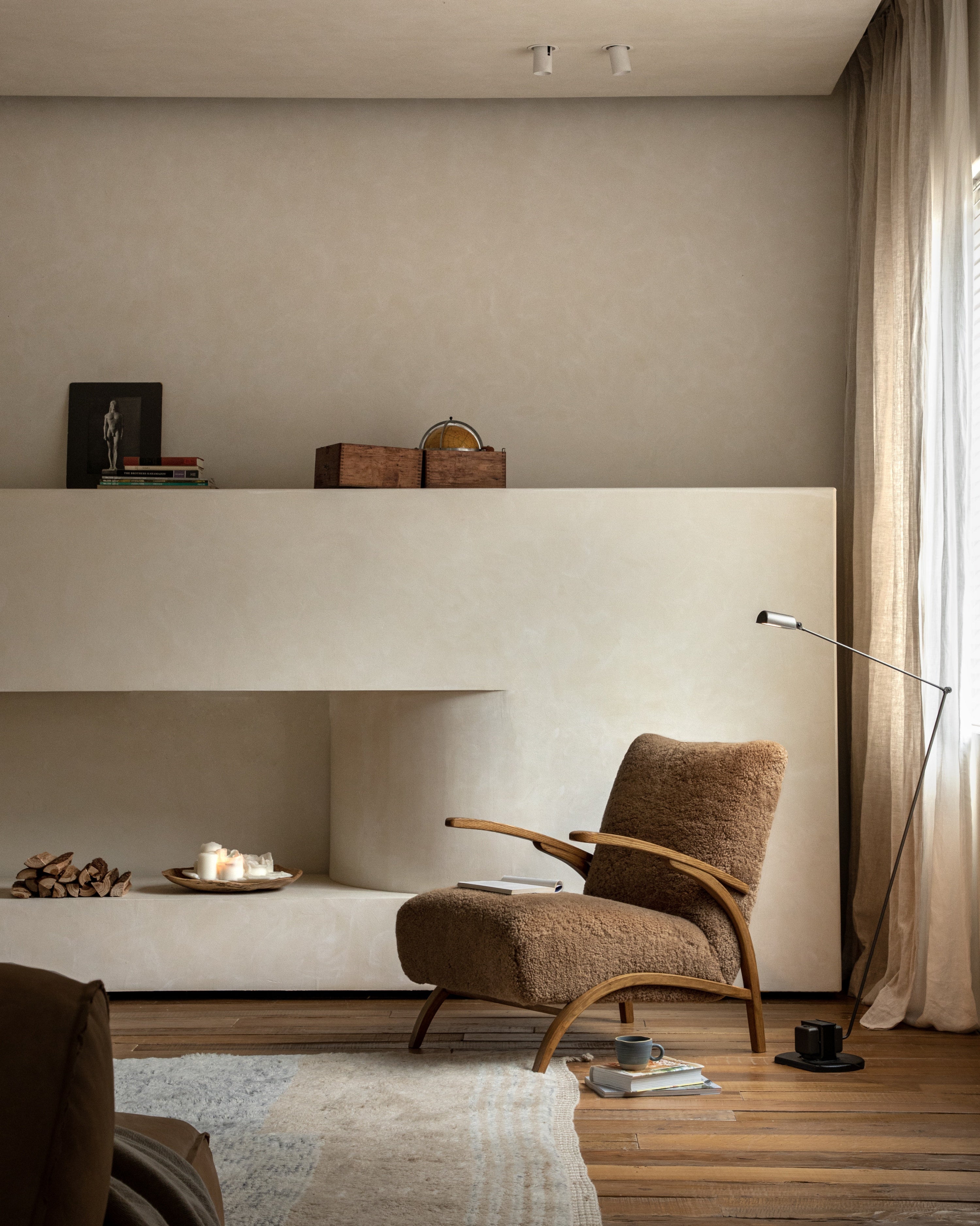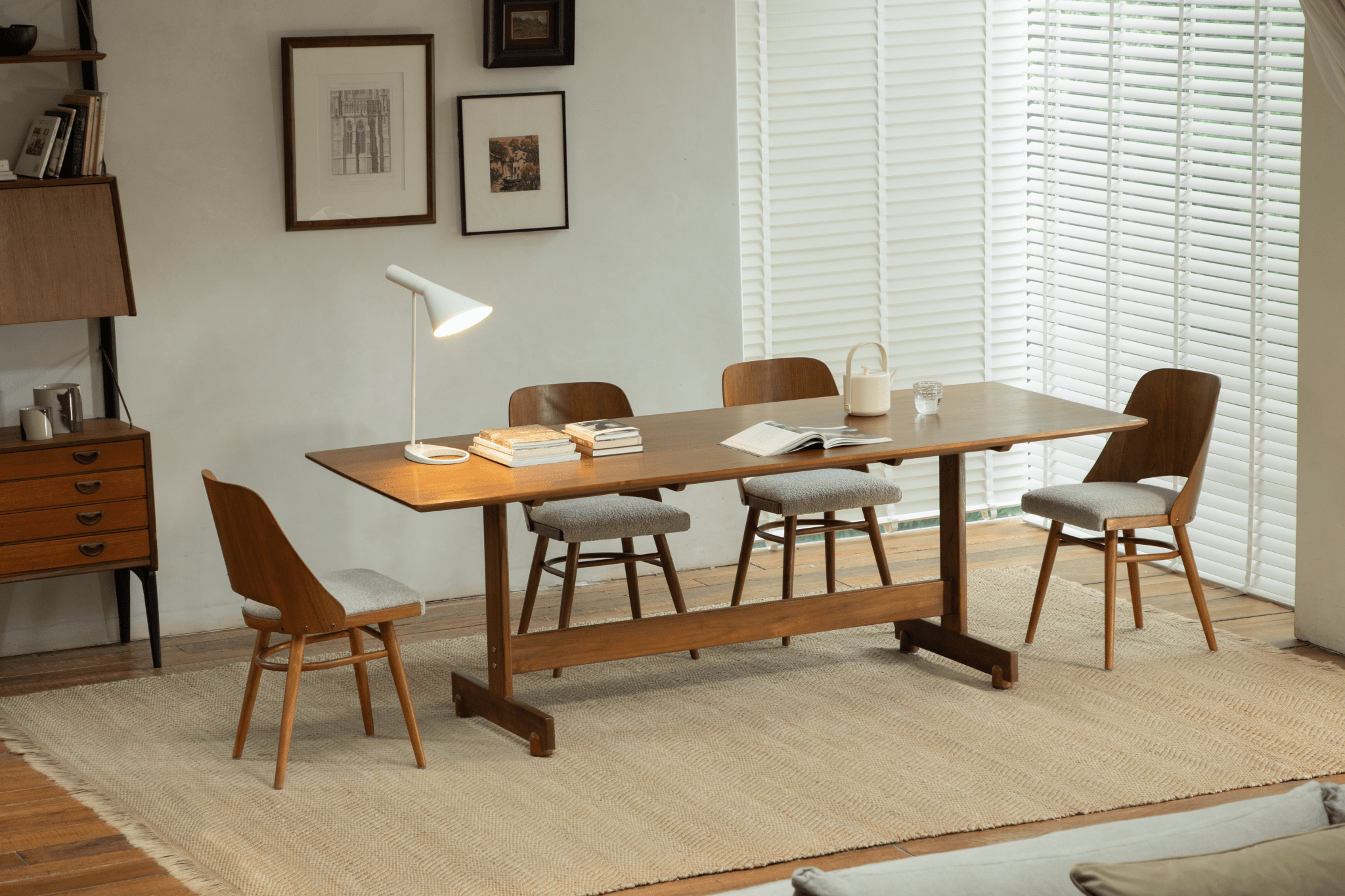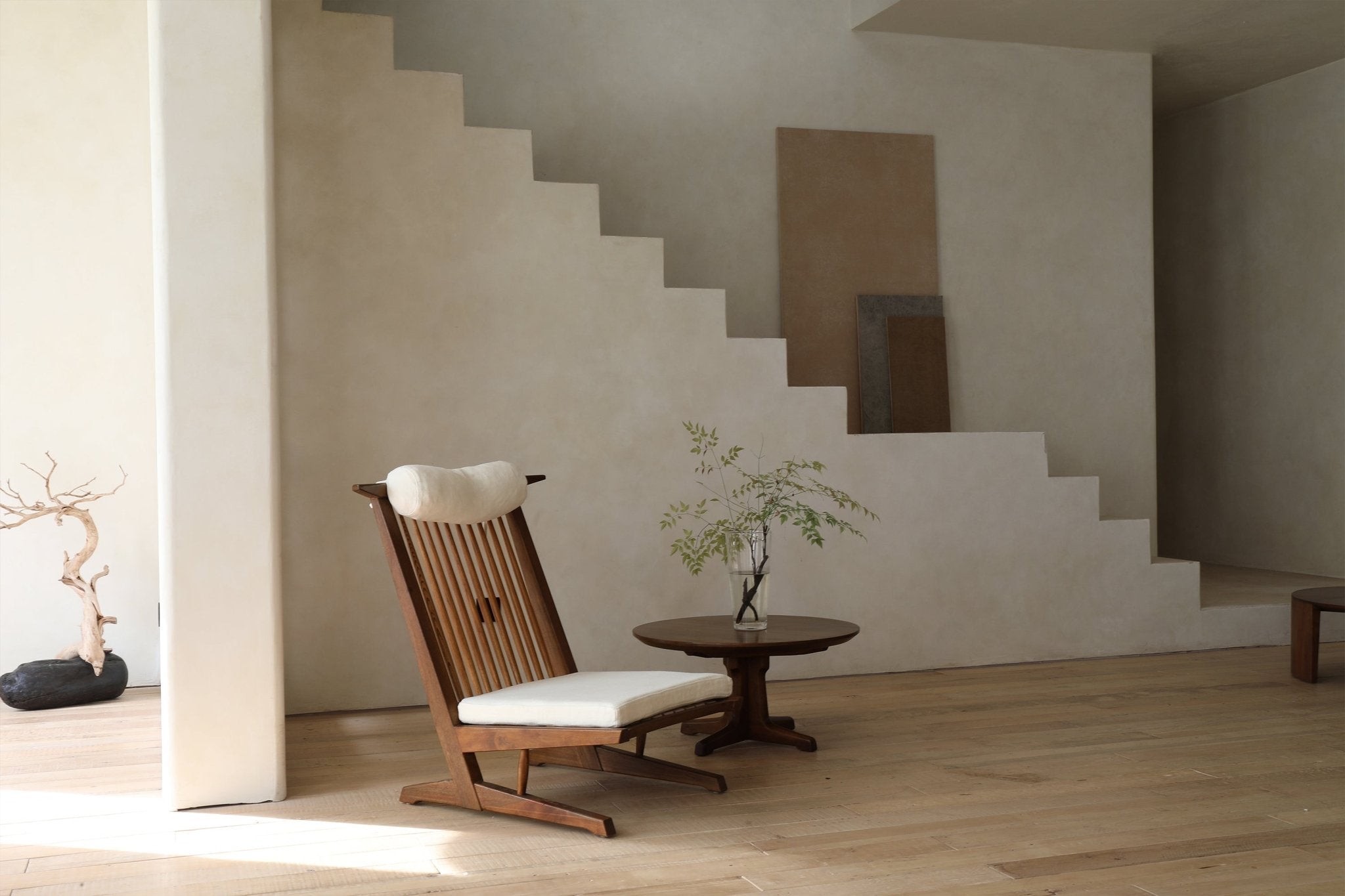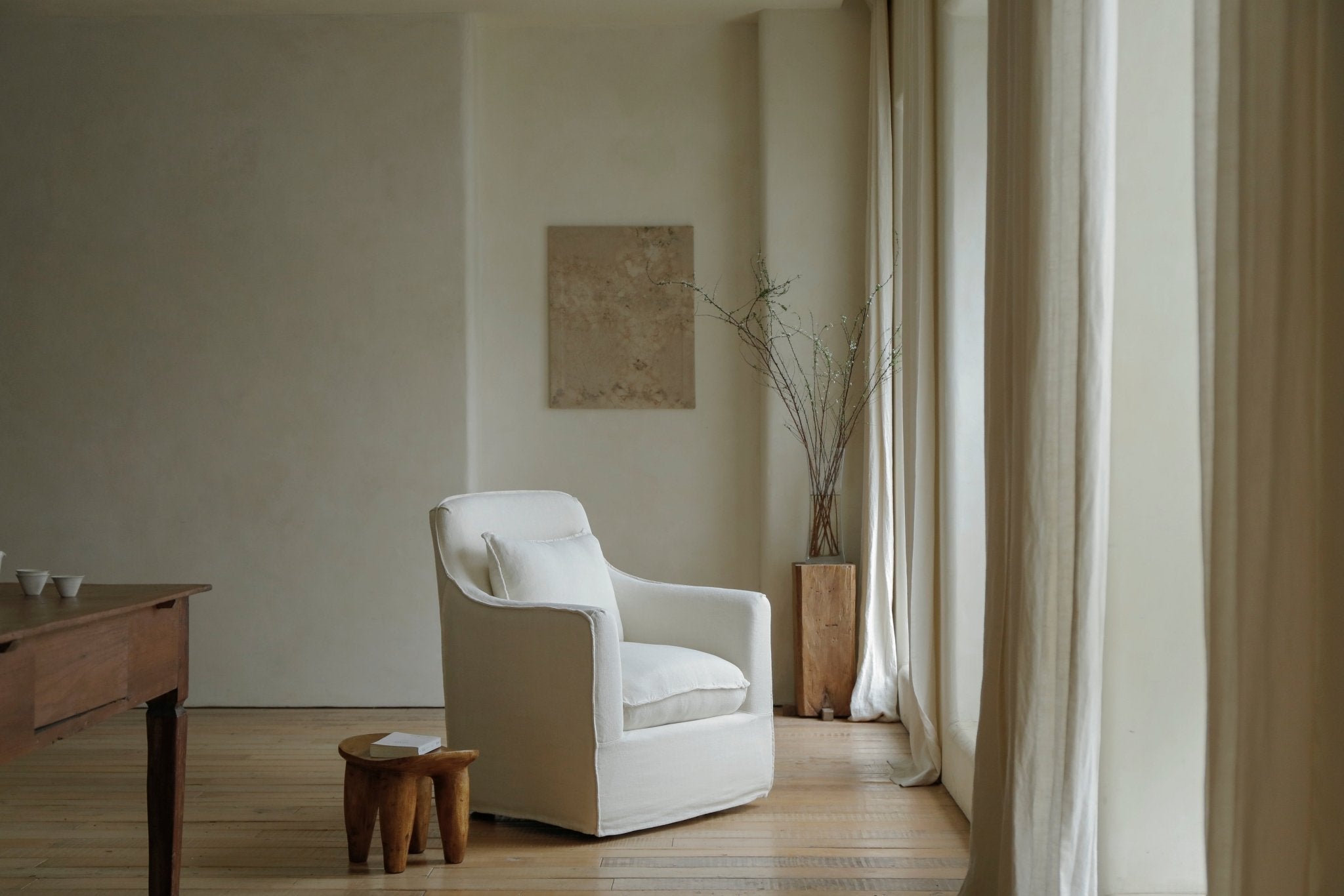
Sofa Chair vs. Lounge Chair: What's the Real Difference?
Key Takeaway
Wrapping up the ideas of the blog, here's a simple way to pick the right chair for the right room.
- Choose a sofa chair for upright comfort, flexible seating, and a cohesive look with a sofa set.
- Choose a lounge chair for deep relaxation, longer sits, and a standout focal point that defines a personal corner.
Let posture, seat geometry, room purpose, and circulation guide the decision.
| Category | Sofa Chair | Lounge Chair |
| Purpose | Completes a sofa set for daily, upright seating | Personal relaxation seat for longer sits |
| Posture | Upright, easy sit/stand | Reclined, legs often elevated |
| Seat Geometry | Standard height, moderate depth | Lower seat, deeper cradle |
| Room Role | Coordinated companion piece | Standalone focal point/zone-maker |
| Features | Usually fixed; few mechanisms | Recline, swivel, rocker/glider; ottoman/footrest; sometimes power |
| Space Needs | Compact; simple placement | Needs clearance for recline/ottoman; keep 24–36in pathways |
| Best Locations | Living/family rooms, formal layouts | Reading nook, bedroom corner, sunroom, den |
| Aesthetic | Cohesion with sofa fabric/shape | Statement forms/materials (curved, u-shaped, sculptural) |
Buying seating for your home sounds simple, but the details matter. Many people use the words sofa chair, armchair, and lounge chair as if they are the same. That mix-up often leads to a living room that looks mismatched or feels uncomfortable to use. This comparison clears up the basics and goes into posture, size, style, and use cases to help you choose the right piece with confidence.
Quick Definitions – Sofa Chair and Lounge Chair
Before comparing, it helps to know what each piece really is.
- A sofa chair is a single-seat version of a sofa—often called an armchair or single-seat sofa. It usually matches a larger sofa in the same room and supports an upright sitting posture that works well for conversation, TV time, and guests.
- A lounge chair is built for deeper relaxation. It typically has a more reclined back angle, a deeper seat, and sometimes a footrest or ottoman for full-body comfort. Think reading, napping, or winding down—longer sessions where a relaxed posture matters.
The Core Differences at a Glance
Once you set the baseline, the differences stand out clearly. The following is a brief key takeaway:
- Posture: Sofa chair is upright and supportive; lounge chair is relaxed and reclined.
- Geometry: Sofa chair has standard seat height and moderate seat depth; lounge chair sits a bit lower with a deeper seat.
- Role: Sofa chair completes a set; lounge chair often stands out as a statement piece.
- Features: Sofa chair is usually fixed; lounge chair might recline, swivel, rock, or pair with an ottoman.
- Aesthetics: Sofa chair leans coordinated; a lounge chair can push design—think lounge chair with curved design or a bold leather lounge chair.
Next, we'll look deep into these differences.
Sofa Chair vs. Lounge Chair: Posture
Sofa chair: Built for an alert, upright posture that supports conversation and easy in/out. The back is more vertical, the seat pan is flatter, and the arm height suits holding a book or remote without slumping. This posture keeps hips and knees at comfortable right angles, which helps guests of different ages feel supported during social time, short reading sessions, or TV watching.

Lounge chair: Designed for unwinding. Expect a more reclined back angle, deeper cradle, and often a slightly lower seat that lets the pelvis tilt back and the spine relax. Pairing with an ottoman or built-in footrest lets the legs elevate, reducing pressure at the lower back and improving comfort for longer sessions like binging a show or reading on weekends.
Sofa Chair vs. Lounge Chair: Seat Geometry
Sofa chair: Seat height typically aligns with sofas and coffee tables, making it easy to reach drinks or snacks. Moderate seat depth keeps the sit “active,” so feet rest flat on the floor and knees aren't overstretched. This geometry suits a wide range of body types and prevents that “too-deep” feeling that can strain the lower back without a pillow.
Lounge chair: Often lower to the ground with a deeper seat to let users settle back. The extra depth provides thigh support and room to shift positions. Taller users generally love this; shorter users can add a lumbar pillow or choose a model with a shallower pitch. If the chair reclines, the geometry changes as you lean back, so test clearances and comfort at multiple angles.
Sofa Chair vs. Lounge Chair: Function
Sofa chair: Acts as the single-seat partner to a main sofa, rounding out seating capacity while keeping a consistent look. It's a flexible plug-in for living rooms, family rooms, and formal seating plans where symmetry and easy mixing with side tables and lamps matter. Because it mirrors the sofa's proportions, it blends in without pulling focus.
Lounge chair: Often chosen to claim a corner and create a dedicated “me time” spot—reading nook, bedroom corner, sunroom seat, or a view-facing perch. It's less about adding another identical seat and more about carving out a distinct purpose: deep relaxation. In open-plan spaces, it can visually zone an area without walls.
Sofa Chair vs. Lounge Chair: Features
Sofa chair: Usually fixed-back and fixed-base, which keeps maintenance simple and costs predictable. The benefit is stability and longevity, especially in households where furniture doubles as everyday, high-traffic seating.
Lounge chair: Frequently offers movement or support features—swivel bases to pivot between a conversation and a window view, rocking or gliding for gentle motion, manual or power recline to fine-tune angles, and an ottoman or integrated footrest for leg support. These upgrades increase comfort and versatility, but add to footprint, price, and care needs. Confirm outlet access if power recline is on the list.

Sofa Chair vs. Lounge Chair: Aesthetic Role
Sofa chair: Extends the sofa's style language across the room—matching fabric, silhouette, and legs for a cohesive set. This is helpful if the room already has a bold rug, art, or lighting and doesn't need another high-impact piece. Textures like a boucle sofa chair or a linen sofa chair add interest without stealing attention; slipcovered sofa chair designs keep things casual and easy-care; a leather sofa chair adds a timeless, tailored note.
Lounge chair: Plays the star. Forms like a lounge chair with curved design, a u-shaped lounge chair, or materials like a leather lounge chair, rattan lounge chair, or shearling lounge chair can set the tone instantly. In a modern organic scheme, rounded edges and natural materials soften lines and add warmth. In a Zen style room , quiet colors, gentle curves, and low visual weight create calm. The right silhouette can pull a space together even if fabrics or colors differ from the sofa.
Room-by-Room Use Cases and Lifestyle Fit for Sofa Chair and Lounge Chair
Different rooms call for different seating choices.
Living Room Social Zones
If your living room is for talking and movies, a sofa chair goes well with a main sofa. It leaves room for people to walk. For a modern organic or Zen style, a linen sofa chair adds a soft and calm feel. If you want a chair to stand out, a leather lounge chair can be a great focus in a corner.These pieces also pair perfectly with a coffee table.

Reading Nooks and Bedroom Corners
A lounge chair is perfect for reading corners. Add an ottoman, a small side table, and a lamp. For a light, airy look, a rattan lounge chair is a good choice. For a cozy winter spot, a soft shearling chair adds great comfort.Of course, other suitable furniture options can also create a perfect reading spot.
Small Apartments and Condos
In small rooms, a sofa chair with thin arms saves space and keeps paths open. If you want a lounge chair, pick a small one with a built-in footrest. Aim for a smaller footprint and avoid oversized arms. A chaise lounge is also a good choice because it lets you stretch out without using too much space.
Home Offices and Dens
For quick breaks, a lounge chair helps decompress between tasks. If clients or friends visit the office, a sofa chair can host short chats without inviting a full recline. You can use materials to set the mood. A leather chair looks professional in an office, and a linen chair makes a den feel casual.
Buying Checklist: What to Test and Verify
Before committing, confirm the basics. This short list helps avoid returns and buyer's remorse.
Posture fit: upright for sofa chair, reclined for lounge chair; match to intended use.
- Seat geometry: check seat height for table reach, and seat depth so feet rest comfortably.
- Back angle and head support: especially important for lounge chairs and long reading.
- Arm height: comfortable for phone, book, or laptop.
- Ingress/egress: easy to sit and stand, especially for older adults or anyone with knee concerns.
- Ottoman plan: if using an ottoman, confirm leg angle and front clearance.
- Durability: ask about fabric rub tests, cushion recovery, frame materials, and warranty details.
FAQs for Confident Buying
Q1: Is a sofa chair the same as an armchair?
In many homes, yes. People use the terms interchangeably for a single-seat upholstered chair. If it matches a sofa, it functions as a sofa chair.
Q2: Which fits small spaces better?
A slim-arm sofa chair keeps traffic flowing. A compact lounge chair with integrated footrest also works if there's enough clearance to stretch legs.
Q3: Which is better for reading?
A lounge chair with strong lumbar and head support, plus a good lamp and a side table, usually makes longer reading sessions more comfortable.
Q4: What measurements matter most?
Seat height for table reach, seat depth for leg comfort, back angle for posture, arm height for reading, total footprint, ottoman clearance, and pathway width.
Q5: Fabric or leather—how to choose?
Choose chairs based on cleanability, pets and kids, climate, and the look desired. Performance fabrics resist stains; leather wears in with character and needs occasional care.
